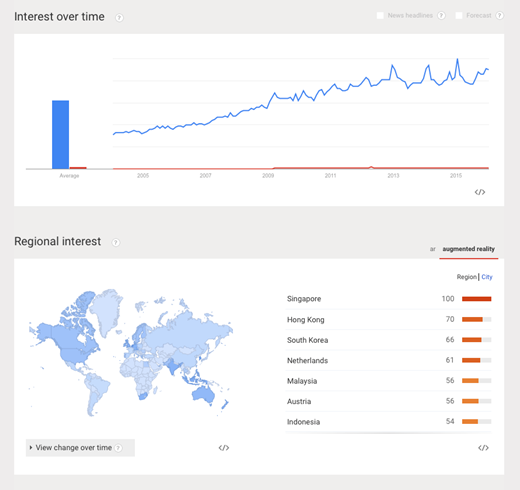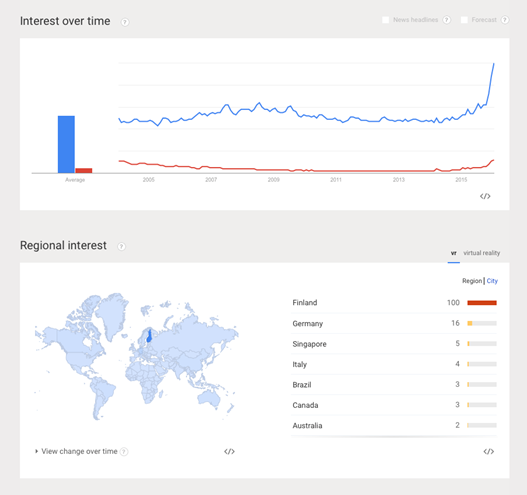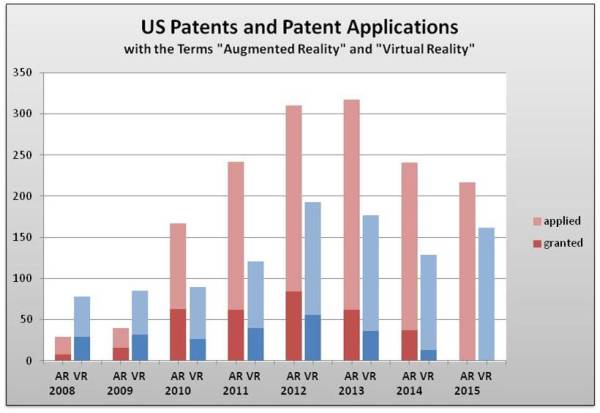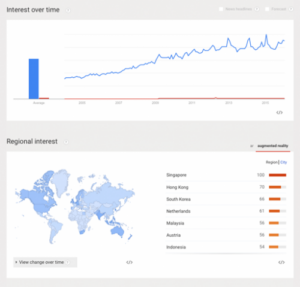In my last Display Daily I was trying to condense the recent CES show into a short article and one of the topics was the abundance of AR/VR solutions. As my colleague, Steve Sechrist, also reported, the interest at the show among visiting professionals and journalists was strong in this field. While I have written about AR and VR solutions for a long time, the interest is now much wider, with articles appearing in mainstream publications besides the typical tech blogs that salivate over the latest prototypes.

Nevertheless, most of the first hand experiences described by the reporters are based on prototypes, development kits and professional solutions that will never make it in their current form into the consumer mass market. While there is no need to discuss again the success of AR and VR solutions penetrating professional and enterprise markets, the key to success is the wider spread acknowledgement of consumer markets. While Google Glass basically deflated the consumer interest in AR, Oculus Rift is just hyping up the market for the release of the Oculus Rift VR headset. With the announcement of the $599 price tag, the stake has been put into the ground against which all other devices will be compared from now on.
While this price tag does appear a little too high for any immediate mass market adoption, we have to realize that this may just be the point. The manufacturing capacity for these headsets is still in its infancy when we compare it tablets and smartphones. When we look at the underlying technologies that make this technology tick, we find many components that have been developed for many years, with some selling in high quantities, while others are only moderately successful. From a display perspective, microdisplays have been around for a long time and resolution requirements were around 720p, which is what we are seeing in many AR headsets on the market today. In the case of Oculus and some of the other VR headsets, the imager is a typical smartphone display with much higher resolution, but still basically a product developed for a different device type. We will continue to see that AR as well as VR devices will use readily available components to keep the cost down. If that is the optimum solution from a performance standpoint remains a question.
Why This Year?
So, why do I believe that AR and VR will become a hot topic this year? First, the use of available components leads to acceptable performance while the entrance cost is not too high. Of course, a $100 headset with good performance would be a slam dunk for gamers, but this is still a daydream for now. As some have pointed out, there is also the cost of the gaming PC to be considered, and when it comes to VR, the PC performance had better be top notch to start out with. On the other hand, gamers are very particular about their hardware and most gamers will already have a high performance machine that can handle VR as well. In case they don’t, a graphics card upgrade will most likely take precedence over a fancy VR headset. Still, gamers are mostly driven by the thrill of the game and if the VR headset increases that, the value proposition is definitely clear.
 Source: Google Trends – AR
Source: Google Trends – AR
The second aspect that makes me optimistic is the continuous increase in AR and VR based on Google Trends. This tool measures the number of Google searches for specific terms. When we look at the increase for the terms “AR” and “Augmented Reality”, we see that this is not just a short lived hype, but shows some long term increase in popularity.
 Source: Google Trends – VR
Source: Google Trends – VR
The terms “VR” and “Virtual Reality” on the other hand did show a strong increase in popularity recently, most likely driven by the Oculus Rift announcement. These numbers are good indicators for the consumer interest in the terms and, as a result, the wider spread of know-how about the technology. We haven’t arrived at the point where the average consumer knows what AR /VR is, but we are moving in the right direction. Now, don’t ask me why Finland is leading the world in VR searches!

The third issue, and arguably the weakest argument in favor of AR and VR, is the number of patents and patent applications that are addressing the AR and VR field. Counting the granted patents as well as the patent applications that use the terms “augmented reality” or “virtual reality” in their abstracts over the last few years, we see that there has been a slight decline in patents applications over the last two years. Please recognize that this is a very crude method of identifying patents that address this technology field.
Many patents that are describing technologies that are crucial to the functionality may not use the terms in their abstract. While larger companies like Google and Apple are filing patents, these often describe aspects of human machine interfaces and processes that allow the use of AR and VR for business purposes. The decline in patent application may show that the ideas that provide generalized solutions for AR and VR are pretty much covered, leading to the decline in patent applications. The patent activities are much more focusing on very specific aspects of the technology without using the general terms that would show up in my search. This is my interpretation of course and I can see how one could argue in a different way as well. NH

